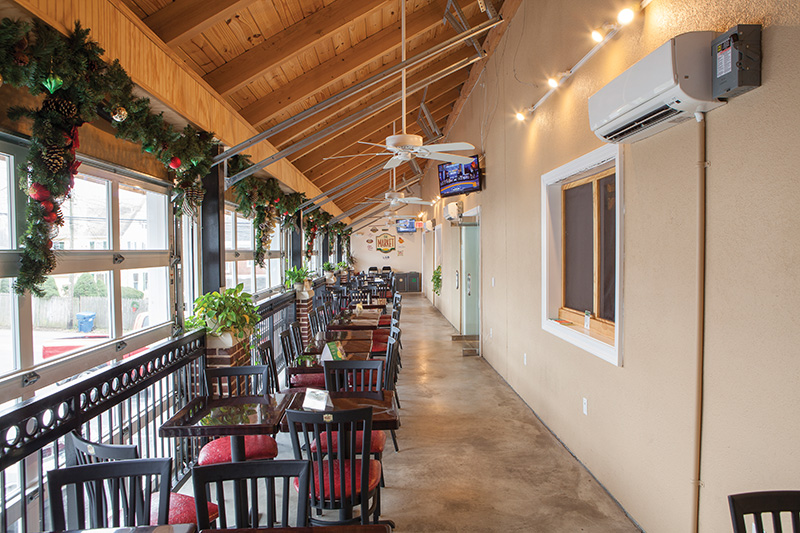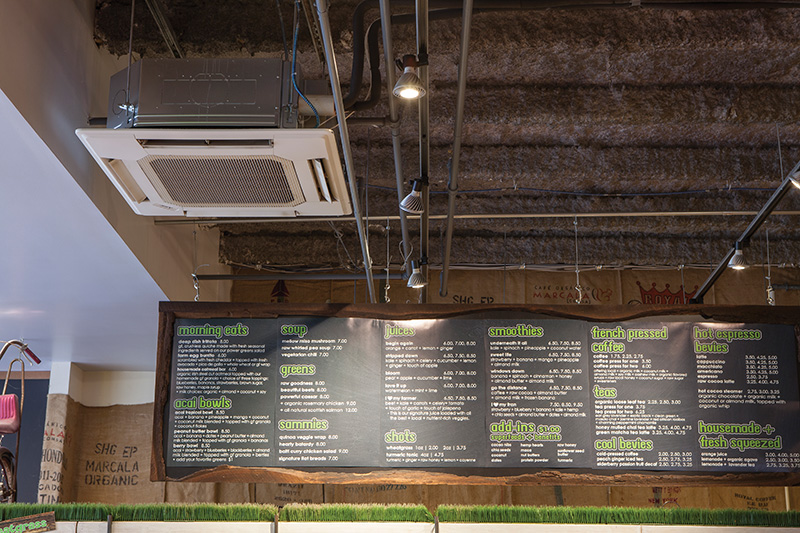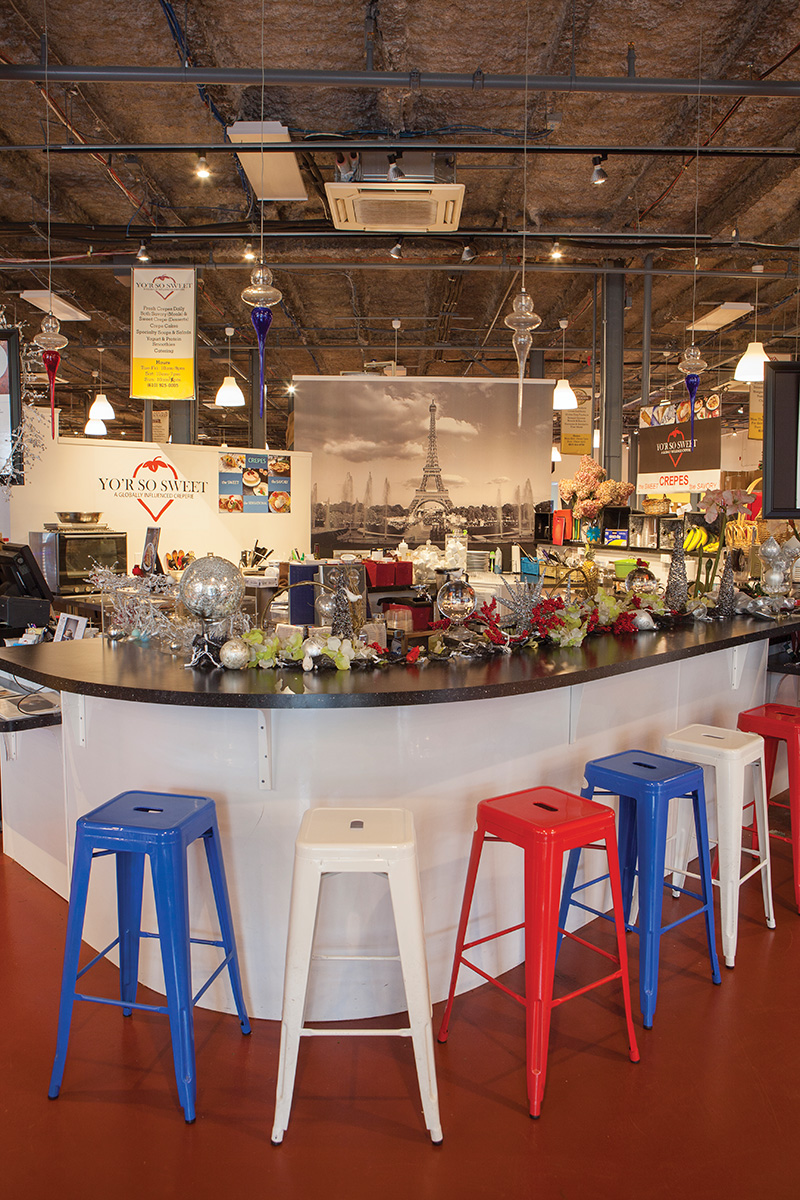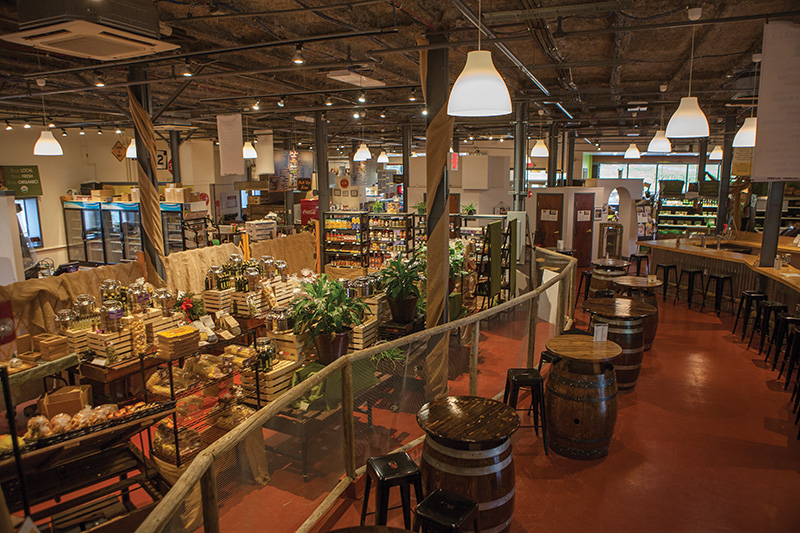Year-round comfort: Keeping a variety of retail and restaurant customers happy with variable refrigerant flow (VRF).
By Larry Bosley
Owners and managers of retail properties like department stores, restaurants, supermarkets and drug stores face unique HVAC challenges: customer comfort, limited square footage for mechanical equipment and a need for high-level controls. Finding HVAC systems that solve these challenges — aiding in customer service and delivering savings to the bottom line — becomes very important.
This idea is one I’ve become very familiar with as the president and CEO of a real estate investment company serving the retail, office building and educational sectors. We’ve been lucky to make a lot of smart choices; one of them was investing in Variable Refrigerant Flow (VRF) — an HVAC technology — in one of our properties. That property is the Market at Liberty Place (the Market) at Kennett Square, a collection of restaurant and store owners under a single roof in Kennett Square, Pennsylvania. When renovating the property into an upscale market, we turned to VRF to meet the needs of a diverse roster of tenants and their many customers. The result has been outstanding.
 To understand why VRF made such a big difference for the Market, it first helps to picture the space. Visitors go to the Market for its mouth-watering array of food, playful layout and eat-in patio that opens to the outside during nice weather. Visitors bring their food to the patio, which features glass garage doors and a concrete floor. The patio is open year-round. In the middle of winter it’s not uncommon to see guests kick off their shoes and press their icy toes against the floor. The barefoot visitors are an odd but understandable sight: While it’s freezing cold outside, the patio floor stays amazingly warm.
To understand why VRF made such a big difference for the Market, it first helps to picture the space. Visitors go to the Market for its mouth-watering array of food, playful layout and eat-in patio that opens to the outside during nice weather. Visitors bring their food to the patio, which features glass garage doors and a concrete floor. The patio is open year-round. In the middle of winter it’s not uncommon to see guests kick off their shoes and press their icy toes against the floor. The barefoot visitors are an odd but understandable sight: While it’s freezing cold outside, the patio floor stays amazingly warm.
As for how we got to the point of happy customers and cozy patios, the story starts in 2010 when my company purchased a three-story, 31,000-square-foot office building. We gutted and rebuilt the space to feature a market on the main floor and offices above and below. The Market would have space for eight or nine tenants (store owners).
 We didn’t know who the Market’s tenants would be or what their products would be, so we knew we needed a versatile HVAC system. You might picture how an ice cream vendor’s HVAC needs differ from a pizza vendor’s; likewise, a fresh seafood merchant’s needs differ from a coffee shop’s. The space, itself, also offered multiple challenges. The Market is not an easy place to work in. It’s 10,000 square feet of open space with 14-foot-high ceilings. We also wanted a patio that would be heated and cooled. All together, that meant we needed an HVAC system that could move a lot of air. I called in Leon Martin, vice president of Clark, Inc., based in Paradise, Pennsylvania, to design a system that would meet our needs.
We didn’t know who the Market’s tenants would be or what their products would be, so we knew we needed a versatile HVAC system. You might picture how an ice cream vendor’s HVAC needs differ from a pizza vendor’s; likewise, a fresh seafood merchant’s needs differ from a coffee shop’s. The space, itself, also offered multiple challenges. The Market is not an easy place to work in. It’s 10,000 square feet of open space with 14-foot-high ceilings. We also wanted a patio that would be heated and cooled. All together, that meant we needed an HVAC system that could move a lot of air. I called in Leon Martin, vice president of Clark, Inc., based in Paradise, Pennsylvania, to design a system that would meet our needs.
Leon designed a VRF zoning system that brings in fresh air and moves it across the Market in an energy-efficient way. He told me, “The design reclaims the heat from the building’s west side, where the solar load is and where the ovens and grills are, and transfers it to cooler areas through three fan coils.” That reclaimed heat is what warms the patio’s concrete slab in the winter. In the summer, the same process keeps the patio cool.
 I agreed with Leon’s recommendations, so we proceeded with renovating the building and installing the new HVAC system. Leon told me that, from his perspective, “It was a very easy installation and it’s been good since. We’ve had no problems with it — no issues with maintenance, repairs or space temperatures.”
I agreed with Leon’s recommendations, so we proceeded with renovating the building and installing the new HVAC system. Leon told me that, from his perspective, “It was a very easy installation and it’s been good since. We’ve had no problems with it — no issues with maintenance, repairs or space temperatures.”
As far as I’m concerned, the HVAC system was worth every dime because of the functionality and comfort level. We survey people coming into the Market, and they say it’s comfortable. On a 100-degree, humid day or a cold day, with the door opening and closing, it’s nice in there.
The system’s quiet operation contributes to that comfort. Leon has said, “The indoor units are so quiet you can’t hear them operating.” The outdoor units are whisper-quiet, too! If I go up to the roof to talk to someone, I can stand right next to the outdoor unit and hear well.
“I also appreciate the ability to control the system not just from the main computer in the Market, but from my cell phone or laptop. If heating or cooling is an issue in the Market and my son and I don’t happen to be there, we can adjust the system from our phones.
“Between the system’s year-round occupant comfort, quiet operation and seamless control, I’m sure you can see why I call this a ‘dynamite system.’ The icing on the cake is the impressively low energy consumption we’ve seen. While we don’t have any pre-installation energy data to serve as a comparison, we did have the energy consumption predicted prior to installation. The predicted numbers looked good, but we’ve been pleasantly surprised that the actual consumption is even less than we had anticipated.”
In short, an all-around success story.
 The Market at Liberty Place is one project among countless projects worldwide that have benefited from VRF. For some retailers, making smart HVAC choices is about driving down customer complaints and maintenance issues; for others the decision is about lifetime operating cost; for others still it’s operating sustainably or finding an aesthetically pleasing system. For us, the choice was about optimal operation. We set out to find an effective, efficient HVAC system, and we found it. VRF has helped make the Market the enjoyable, successful place that it’s become.
The Market at Liberty Place is one project among countless projects worldwide that have benefited from VRF. For some retailers, making smart HVAC choices is about driving down customer complaints and maintenance issues; for others the decision is about lifetime operating cost; for others still it’s operating sustainably or finding an aesthetically pleasing system. For us, the choice was about optimal operation. We set out to find an effective, efficient HVAC system, and we found it. VRF has helped make the Market the enjoyable, successful place that it’s become.
— Larry Bosley has been president/CEO of LGB Properties since 2003. LGB improves the community by providing outstanding real estate properties at prices that people and businesses can afford. Email the author at [email protected].
